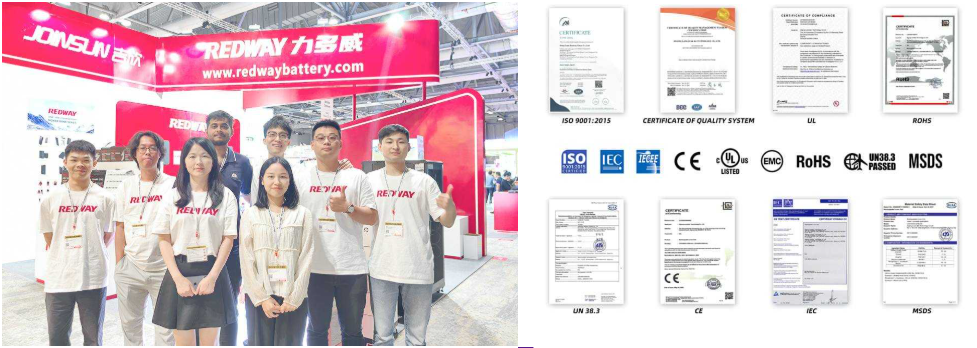Why Don’t Phones Use LiFePO4 Batteries?
LiFePO4 batteries, while safe and long-lasting, are not commonly used in smartphones due to their lower energy density, larger size, higher cost, and slower charging speeds compared to traditional lithium-ion batteries. These factors make them less suitable for compact, high-performance devices like mobile phones. Read more:How Do I Know If My LiFePO4 Battery Is Bad?
What Are the Key Characteristics of LiFePO4 Batteries?
LiFePO4 (Lithium Iron Phosphate) batteries are known for several key characteristics:
- Safety: They have a lower risk of thermal runaway compared to other lithium-ion chemistries.
- Longevity: Capable of enduring over 3000 charge cycles with minimal capacity loss.
- Environmental Stability: They perform well across a wide range of temperatures.
| Characteristic | Description |
|---|---|
| Safety | Lower risk of overheating |
| Longevity | Over 3000 cycles |
| Temperature Range | Stable performance in various conditions |
These traits make them appealing for certain applications, but not necessarily for smartphones.
How Does Energy Density Impact the Use of LiFePO4 in Phones?
One of the primary drawbacks of LiFePO4 batteries is their?lower energy density, typically around 90-120 Wh/kg, compared to lithium-ion batteries, which can reach up to 250 Wh/kg. This means that:
- Less Energy Storage: Phones would require larger batteries to achieve the same performance.
- Increased Weight: Heavier batteries can affect device design and portability.
| Battery Type | Energy Density (Wh/kg) |
|---|---|
| LiFePO4 | 90-120 |
| Lithium-Ion | 150-250 |
This significant difference in energy density makes lithium-ion batteries more suitable for compact devices.
What Are the Size and Weight Limitations of LiFePO4 Batteries?
LiFePO4 batteries are generally larger and heavier than their lithium-ion counterparts. This poses challenges for smartphone manufacturers who prioritize slim and lightweight designs. The bulkiness of LiFePO4 cells can hinder their integration into modern mobile devices, which often require space-efficient power sources.
How Do Cost Factors Influence Battery Choice for Mobile Devices?
Cost is a critical factor in battery selection for smartphones. Currently, LiFePO4 batteries tend to be more expensive than traditional lithium-ion batteries due to:
- Higher Manufacturing Costs: The materials and processes involved in producing LiFePO4 batteries are pricier.
- Market Demand: The established market for lithium-ion technology drives prices down through economies of scale.
| Cost Comparison | Average Cost per kWh |
|---|---|
| LiFePO4 | $400-$600 |
| Lithium-Ion | $300-$500 |
This price disparity makes it challenging for manufacturers to justify switching to LiFePO4 technology.
What Are the Performance Limitations of LiFePO4 Batteries?
While LiFePO4 batteries excel in safety and longevity, they have performance limitations that can affect their suitability for mobile devices:
- Lower Discharge Rates: They typically cannot deliver high currents as quickly as other lithium-ion types.
- Slower Charging Speeds: Charging times are generally longer, which can be inconvenient for users.
These limitations can hinder the overall user experience in high-performance applications like smartphones.
How Does Charging Speed Affect the Viability of LiFePO4 Batteries?
Charging speed is crucial for consumer electronics. While LiFePO4 batteries can be charged safely at a moderate rate, they do not support rapid charging as effectively as lithium-ion batteries. This slower charging capability can lead to longer wait times for users who rely on quick recharges throughout the day.
What Are the Safety Considerations for Using LiFePO4 in Phones?
Safety is one area where LiFePO4 shines; however, manufacturers must still consider:
- Thermal Management: While less prone to overheating, proper thermal management systems must still be implemented.
- Battery Management Systems (BMS): These systems are essential for monitoring voltage and temperature to prevent potential issues during operation.
Despite being safer than some alternatives, these considerations still require careful engineering.
How Do Other Battery Technologies Compare to LiFePO4 for Mobile Devices?
When comparing battery technologies, lithium-ion remains dominant due to its balance of energy density, weight, cost, and performance:
| Comparison | LiFePO4 | Lithium-Ion |
|---|---|---|
| Energy Density | Lower | Higher |
| Weight | Heavier | Lighter |
| Cost | Higher | Lower |
| Charging Speed | Slower | Faster |
The advantages offered by lithium-ion technology make it more suitable for mobile devices currently.
Expert Views
“While LiFePO4 batteries provide significant safety and longevity benefits, their lower energy density and larger size make them less practical for smartphones where space and weight are critical,” states Dr. Emily Carter, a battery technology expert with over 10 years in research and development.
FAQ Section
Why don¡¯t phones use LiFePO4 batteries?
A: Phones typically do not use LiFePO4 batteries due to their lower energy density, larger size, higher costs, and slower charging speeds compared to traditional lithium-ion batteries.
What advantages do LiFePO4 batteries have?
A: They offer enhanced safety features, longer lifespan, and better thermal stability compared to other battery types.
Could we see more phones using LiFePO4 technology in the future?
A: It’s possible if advancements improve energy density and reduce costs; however, current market dynamics favor lithium-ion technology.



